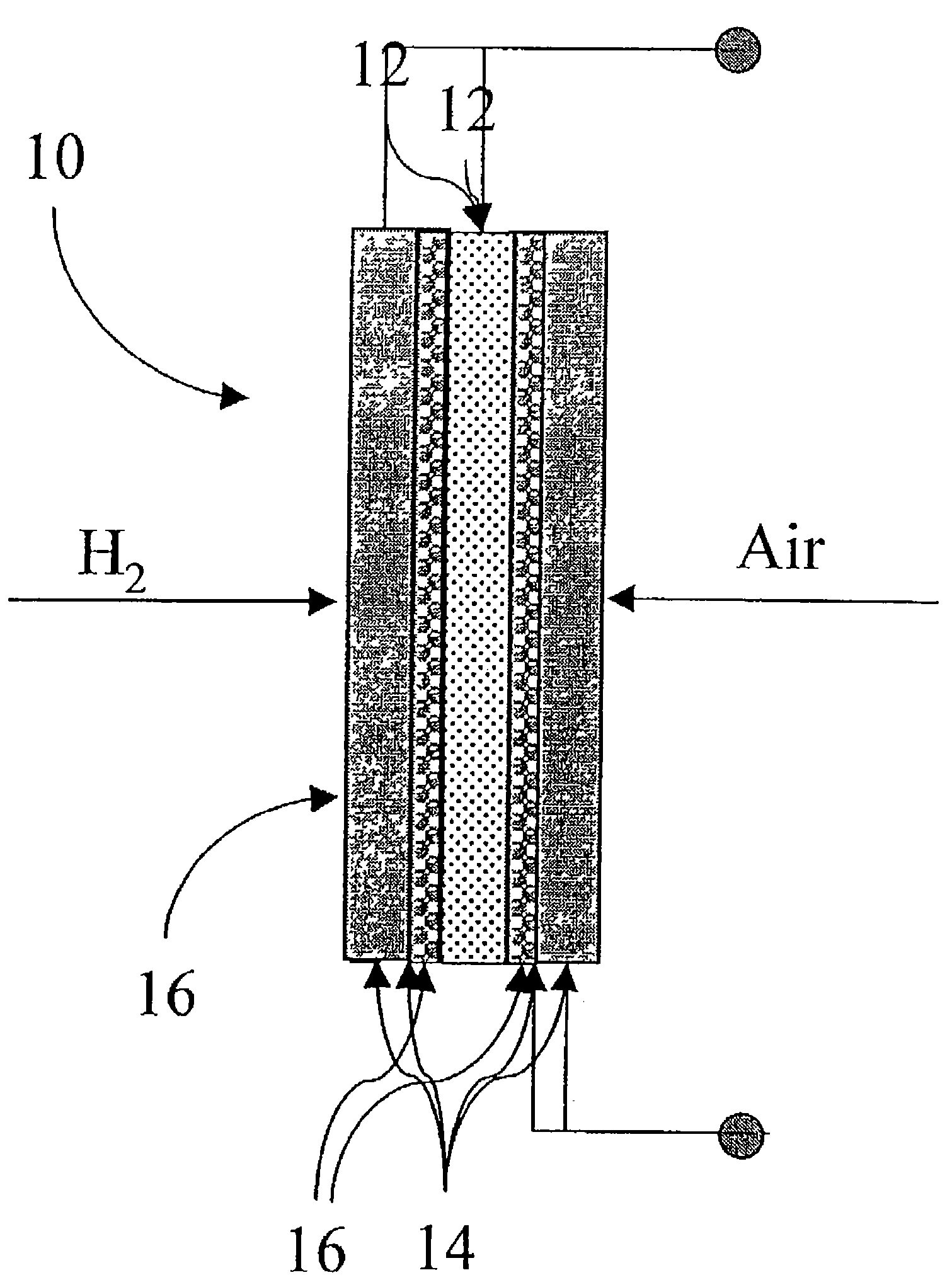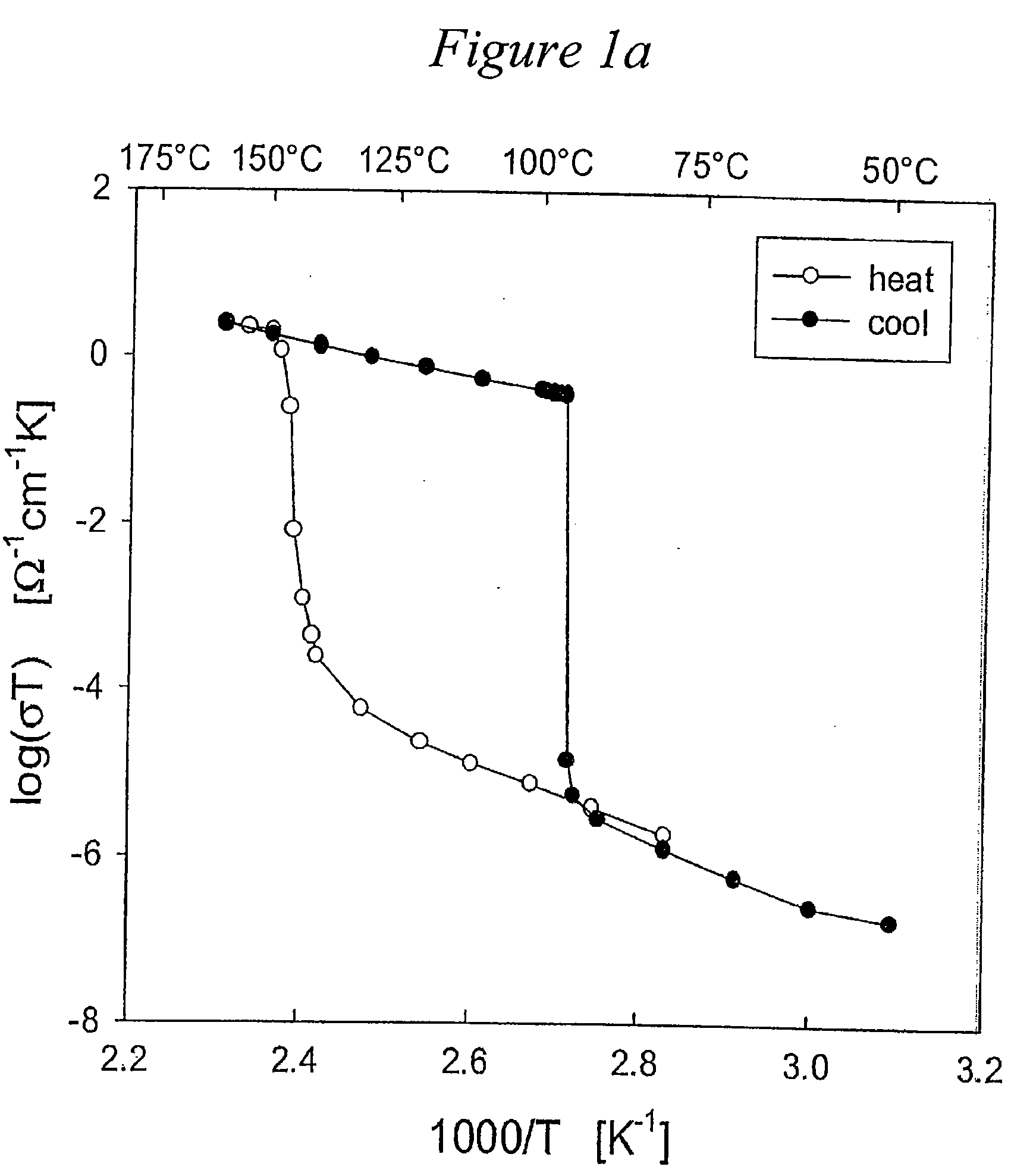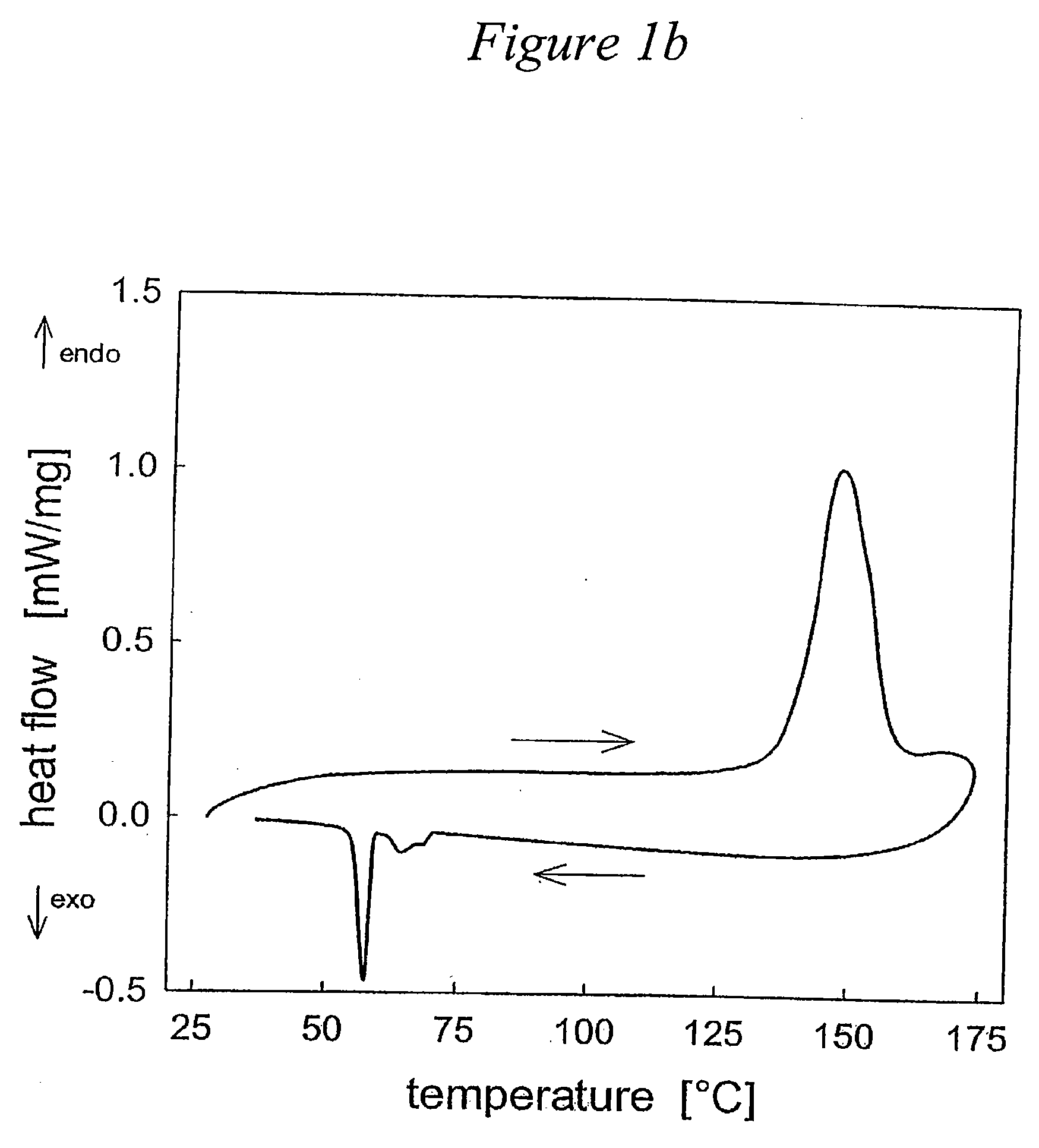Solid acid electrolytes for electrochemical devices
a technology of electrochemical devices and solid acids, applied in the direction of conductive materials, hydrogen/synthetic gas production, chemical/physical/physicochemical stationary reactors, etc., can solve the problems of irreversible degradation, limited device operation efficiency, and degradation of the conductivity of electrolyte, so as to enhance mechanical integrity and/or chemical stability of membranes.
- Summary
- Abstract
- Description
- Claims
- Application Information
AI Technical Summary
Benefits of technology
Problems solved by technology
Method used
Image
Examples
example 1
[0060]CsH(PO3H): The compound CsH(PO3H) was synthesized from aqueous solutions of cesium carbonate and phosphorous acid in which the Cs:PO3H mole ratio was fixed at 1:1. Just enough water was added to ensure complete dissolution, and then the solution gently heated to induce H2O evaporation and precipitation of the product. The resultant material was separated from the mother liquor by filtering and rinsed with acetone.
example 2
[0061]NaCaHSiO4: combine NaOH, Ca(OH)2 and SiO2 (in a 3:2:2 molar ratio) with a few drops of water and place in a thermal bomb at 280° C. for 48 hours. (B. G. Cooksley and H. F. W. Tayer, Acta. Cryst. B30 (1974) 864-867.)
example 3
[0062]BaH2SiO4: dissolve NaOH and Na2SiO3 in hot deionized water and then add aqueous BaCl2 (mole ratio of Ba:Si=1.2:1) to induce precipitation of the desired product. (G. Kruger and W. Wieker, Z. Anorg. Allg. Chem. 340 (1965) 227-293.)
PUM
| Property | Measurement | Unit |
|---|---|---|
| temperatures | aaaaa | aaaaa |
| temperature | aaaaa | aaaaa |
| temperature | aaaaa | aaaaa |
Abstract
Description
Claims
Application Information
 Login to View More
Login to View More - R&D
- Intellectual Property
- Life Sciences
- Materials
- Tech Scout
- Unparalleled Data Quality
- Higher Quality Content
- 60% Fewer Hallucinations
Browse by: Latest US Patents, China's latest patents, Technical Efficacy Thesaurus, Application Domain, Technology Topic, Popular Technical Reports.
© 2025 PatSnap. All rights reserved.Legal|Privacy policy|Modern Slavery Act Transparency Statement|Sitemap|About US| Contact US: help@patsnap.com



